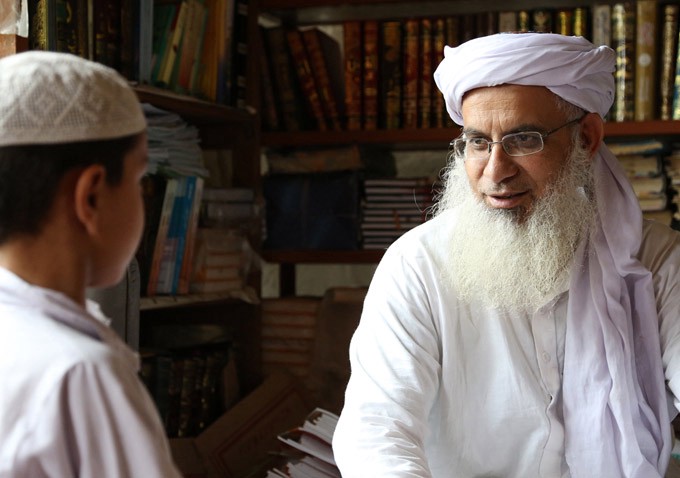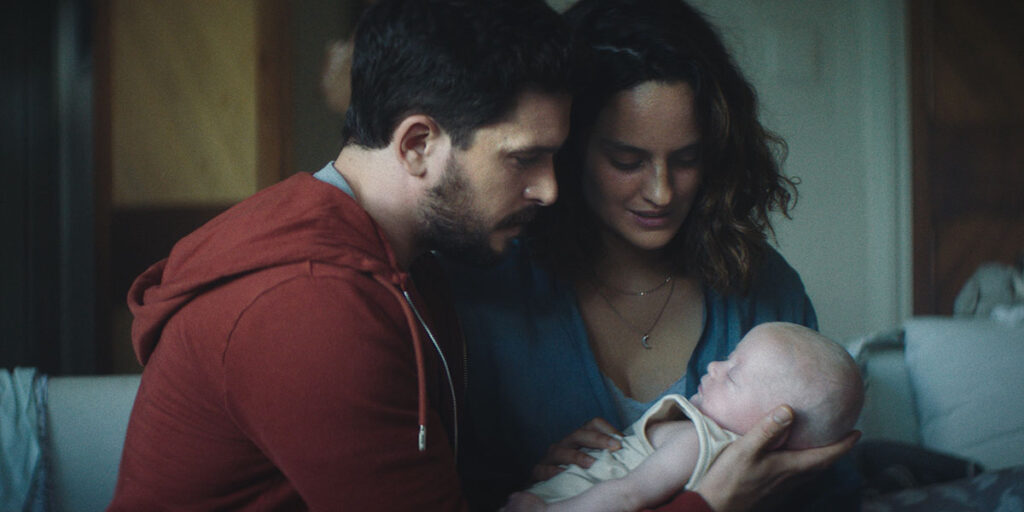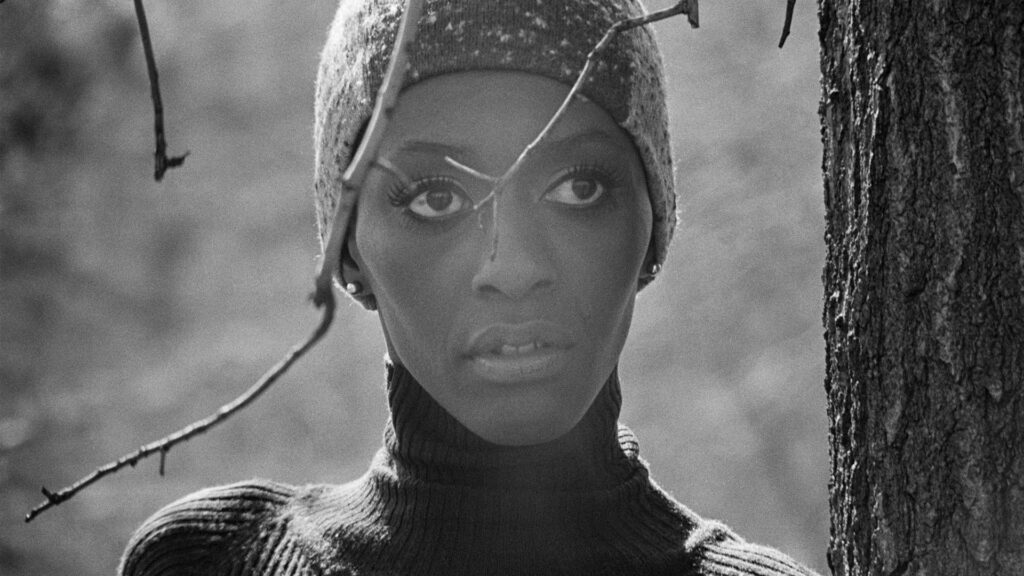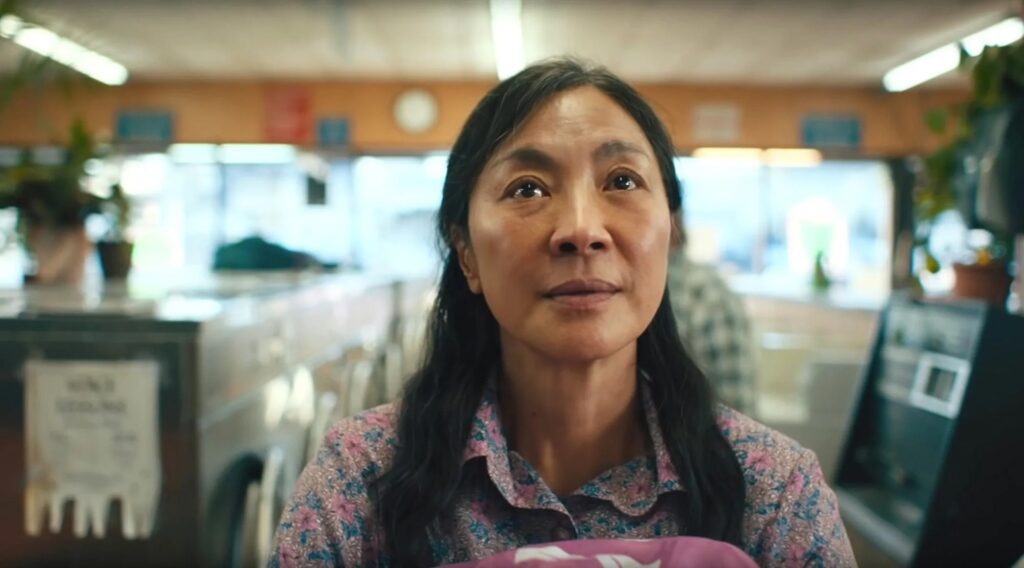Hemal Trivedi’s credits include “Outlawed in Pakistan,” “Saving Face,” “Shabeena’s Quest” and “Beyond Mumbai.” She has produced and edited over 50 award-winning shorts for Odyssey Networks. (Tribeca Film Festival official website).
Mohammed Naqvi co-directed “Among the Believers.”
“Among the Believers” will premiere at the 2015 Tribeca Film Festival on April 17.
W&H: Please give us your description of the film playing.
HT: “Among the Believers” charts the personal quest of
charismatic Pakistani cleric Abdul Aziz Ghazi, whose schools are training
thousands of young children to take part in jihad (holy war). Cleric Aziz
is an outspoken ISIS supporter and a Taliban ally. His ultimate goal is
to impose a strict version of Sharia law throughout the country.
Alongside Aziz’s personal quest, the film also
charts the coming-of-age stories of two of his students, who are pawns in his
ideological war. Throughout the film, their paths diverge: Talha, 12, detaches
from his moderate Muslim family and decides to become a jihadi preacher.
Zarina, also 12, escapes her madrassa [religious school] and joins a regular school. Over the
next few years, Zarina’s education is threatened by frequent Taliban attacks on
schools like her own.
The film also profiles Aziz’s foil, a nuclear
physicist named Dr. Pervez Hoodbhoy. Throughout the film, Dr. Hoodbhoy
passionately opposes Aziz through his public appearances, lectures and the
media. Opposition against Aziz comes to a head in December 2014, when Aziz
insults a grieving nation by trying to justify the brutal massacre of 132
school children in Peshawar by the Taliban. The attack ignites a movement to
end extremism in Pakistan’s mosques and madrassas. Led by Hoodbhoy and others,
Pakistan’s moderate majority focuses on Aziz and calls for his arrest.
W&H: What drew you to this story?
HT: I grew up in an
inner-city chawl (ghetto) of Mumbai in a conservative Hindu Brahmin family. There was a culture of mistrusting Pakistan and its people where I grew
up. I defined the country by the violence and terrorism I saw it inflict on my
homeland at the time. Then, in 2008, I lost a friend in the Mumbai terror
attacks, a series of massacres carried out by Islamic militants. After the
attacks, my heart was full of anger and hate for the perpetrators of the crime,
who were found to be Pakistanis. To make sense of my anger, I started
digging deeper into the root causes of these attacks.
I came to understand
that ordinary Pakistanis are themselves victims of this violence, rather than
perpetrators. Their way of life is under attack by this fringe minority, which is
forcing itself on the country’s vast, peaceful majority. The same people
who carried out the Mumbai terror attacks are attacking ordinary Pakistanis on
an almost daily basis. There is an ideological conflict that is reshaping
modern Pakistan and causing it to implode. And this ideological
conflict’s most important battleground is the field of education. Young
minds are trained, militarized and instilled with the most extremist brand of
Islam in many of the country’s madrassas and are used as
pawns by certain militant groups for their own political agendas.
I traveled to
Pakistan in 2009 to document the depths of Pakistan’s ideological divide. By
then, my lifelong misconceptions about Pakistan had completely unraveled. My
co-director on “Among the Believers” is a talented Pakistani Muslim filmmaker,
Mohammed Naqvi, and most of our incredible crew are Pakistani Muslims as well. One of the film’s writers and producers, Jonathan Goodman Levitt, also started
to work on the film in 2010. Through this film, we hope to spotlight Pakistanis
who are working to defuse extremism by providing the next generation of Pakistanis
an escape from the cycle of militancy or poverty.
W&H: What was your biggest challenge in making the film?
HT: Protecting our crew’s
physical safety was an ongoing challenge. Throughout the five and a half years
of production, members of our crew narrowly escaped bomb blasts and experienced
several close encounters with gunfights. We also received several death threats
and were tracked by intelligence agencies.
As a woman, a Hindu and an Indian, I faced different risks during production. When we first started
filming, I visited the Red Mosque several times disguised as a Muslim. A
trusted contact warned me that, in doing so, I was risking my life. These
realities limited my access to some of our shoots. During those times, my
co-director Mohammed Naqvi stood in for the both of us. I was so fortunate to
have a local Pakistani crew that was willing to risk their lives to shoot the
footage for my film. This is very significant, given the historical mistrust
between Indians and Pakistanis.
The greatest
challenge to any of our crew occurred after the recent Taliban attacks on a
Peshawar school. Our co-producer, Musharaf Shah, lost four of his nephews in
this attack. After our main character, Cleric Abdul Aziz, publically condoned
the Taliban for this massacre, Musharaf had to conduct a final interview with
him. In the interview, which is in the film, Aziz defends the murderers, and
Musharaf restrains himself throughout.
As a documentarian, you learn to
distance yourself from your characters and the events you observe, but Musharaf
showed exemplary bravery and strength when he put aside his grief to conduct
this interview. We’ve dedicated the film to Musharaf’s four nephews: Ishaq,
Ibrahim, Ahmed and Owaiz.
W&H: What do you want people to think about when they are leaving the theatre?
HT: I hope the audience leaves with a more nuanced
understanding of how religious militancy spreads beyond the shallow and hyperbolic news stories the mainstream media offers. And I hope that once they
see where the roots of religious violence comes from, they will understand why
this terrorism cannot be defeated with violence, or by America dropping more
bombs.
Instead, terrorism can be slowly defused by empowering people like Tariq, one of our film’s subjects, whose school is helping children gain skills that
will make them employable in the future. I feel that it is through books
and not through bombs that Pakistan can step back from its current precipice.
W&H: What advice do you have for other female directors?
HT: Growing up, I was told that a woman’s role in a
society is to be a good, obedient wife and a gentle mother. Throughout my
life, I fought against that mindset. When I decided to become a filmmaker,
my own mother opposed my decision. She said that the industry is too
cruel, too tough, too competitive and not a good place for a woman. I
disregarded her advice and joined a film school.
When I decided to go to
Pakistan to direct my first feature film in 2009, my mother threatened to kill
herself if I traveled there alone. Throughout this tumultuous time, my husband
fought vehemently to help me pursue my dream. He even bought me my first
camera, my first tripod and my first laptop.
Over a period of time, my mother came around, and
today she is my biggest supporter. Filmmaking is a challenge, and your loved
ones may not always encourage you to follow your passion. But always make
amends with your family, and always make them a part of your world. Slowly and steadily, they will see the beauty and importance of your work
and learn to support you.
Indeed, my mother’s support proved vital to my
career during my next great challenge: balancing motherhood and work. She
and my mother-in-law stayed with me for over a year after I gave birth to my son.
Thanks to them, I felt confident I could keep my career alive as I transitioned
into motherhood.
Not everyone shared my optimism, and I encountered
many people in the industry who told me I couldn’t possibly be both a filmmaker
and a mother. They suggested I take a step back from my work and delegate
responsibilities on many of my projects. When I was still nursing my baby, some
of my colleagues in the industry were very pushy, even refusing to allow me the
time I needed to pump my milk. I nursed my son until he turned one year old, and I
had to constantly fight for my rights as a mother.
Luckily, I had the good fortune of working with two
very talented women directors, Habiba Nosheen and Hilke Schellmann, who allowed
me to work from home and accommodated my schedule as a mother of a newborn. They celebrated my talents as an editor and a filmmaker.
So my advice to all the women
filmmakers is to do your job professionally and diligently. As a
woman in this industry, it is particularly important to be careful choosing whom
you work with. Make sure that your co-workers will respect you as a woman
and a mother. Make sure that they will respect your talents and support
you as a filmmaker. Also, choose a life partner carefully. Choose
a person who supports your passion and sees you as a partner and a companion,
not merely as a wife or a mother of his child.
W&H: What is the biggest misconception about you and your work?
HT: When I started working as an editor about a decade
ago, I was mostly hired as an assistant to help edit documentaries based out of
India or Pakistan. I am fluent in four Indian and Pakistani languages — Hindi, Urdu, Gujarati and Marathi — and I understand Punjabi and Bengali. Over the years, because of my editing skills and my language skills, I
have edited and worked on several South Asian Films.
I have found a
comfortable niche for myself. But sometimes I do get categorized as a
South Asian filmmaker who can produce and edit only South Asian films and
may not be suitable for the “mainstream.” That’s the biggest misconception
about my work. I feel that my directing, storytelling and editing skills
are suitable for the mainstream as well, and I would not like to be put in a
box.
W&H: How did you get your film funded? Share some insights into how you got the film made.
HT: Because of the sensitive nature of the film, we
decided not to crowdsource. I self-funded the project for the first three
years of production. I took out a home-equity loan and sold some of my wedding
jewelry to fund the film. Once we had quality footage to show, we started
getting grants. The whole grant application process is so ferociously
competitive that it helps to already have a head start on your film. Donors are
more likely to trust that you’ll actually complete the project.
We were
fortunate to receive several generous grants that allowed us to finish the
film. “Among the Believers” was completed with financial support from the Ford
Foundation, Chicken and Egg Pictures, Tribeca All Access, Gucci Tribeca
Documentary Fund, the Sundance Institute Documentary Film Program, the Center for
Asian-American Media, the Joan and Lewis Platt Foundation and the New York State
Council on the Arts. Women Make Movies was also immensely helpful as our fiscal
sponsor.
W&H: Name your favorite woman-directed film and why.
HT: My favorite woman-directed film is “Harlan County, U.S.A.” I saw it at a small film club in Mumbai, and I was blown away. That was the first time I had ever seen a documentary as emotional and
dramatic as a fiction film. That’s when I decided to dedicate my life to
nonfiction dramatic storytelling.







